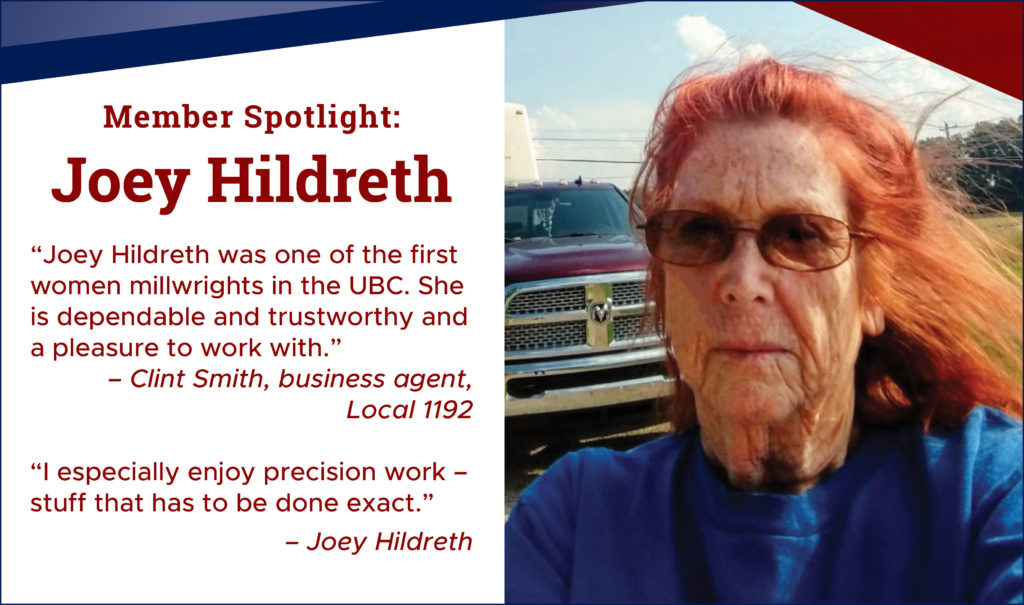
After Joey Hildreth began working as a millwright in 1974, she didn’t see another female millwright on a jobsite for at least four years. But that didn’t shake her confidence in her career choice.
“It wasn’t a bed of roses,” she said. “In the beginning, people loved or hated me. Now I have everybody’s respect. I earned it by working hard, doing my job, and not asking others to do it for me.” Hildreth’s background prepared her to work in a “man’s world.” Her mother was an airplane mechanic at Courtland Army Airfield in Alabama during World War II, and she grew up as the only girl in a family with four children. Her father and two of her brothers were millwrights.
Millwrighting is Hildreth’s second career in a field traditionally dominated by men. With a degree in electronics engineering, she worked at NASA and helped land humans on the moon for the time in 1969. When the electronics work she had been doing dried up after the moon landing, Hildreth turned to a profession she knew would pay well, provide good benefits, and match her skills and interests.
She joined Sheffield, Alabama’s Local Union 109, a combined carpenters and millwrights local, and later moved with the millwrights to Millwright Local 1192.
Forty-six years later, at age 75, Hildreth is still working 10-hour days. She’s currently installing conveyor and monorail at the Mazda Toyota Manufacturing facility under construction in Huntsville, Alabama.
“I especially enjoy precision work – stuff that has to be done exact,” she said. “I started out using indicators, but now we use lasers.”
Clint Smith, business agent for Local 1192, said Hildreth has an outstanding work ethic. “Joey Hildreth was one of the first women millwrights in the UBC,” Smith said. “She is dependable and trustworthy and a pleasure to work with.”
During her career, Hildreth has worked in every industry millwrights serve. “I’ve done it all, from turbines to paper mills,” she said. She’s also travelled all over the United States and to other countries, including Venezuela and the British Isles, working as a union millwright.
These days, she’s raising her two great-grandchildren and stays closer to home. She still lives in Muscle Shoals, Alabama, where she grew up, and she says there have been more jobs she can drive to in the past three years.
Hildreth has seen the number of women millwrights on jobsites gradually increase. At the Mazda Toyota Manufacturing plant, eight of the 80 to 90 millwrights on the job are women, she said, and that’s a typical percentage today.
She enjoys helping and encouraging apprentices, and, for the past 30 years, Hildreth has volunteered her time at high school and college career days and fairs. She focuses particularly on promoting the union and millwright work to young women, who she says either don’t know about the millwright trade or think it’s a “man’s job.”
She tells them they need to be mechanically inclined, strong in math, and willing to work hard, but they don’t need to worry about physical barriers.
“I’m 75 years old and probably don’t weigh 125 pounds soaking wet,” she said. “If I can do it, they can do it.”
